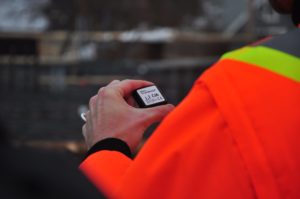Construction is still regarded as a traditional industry with heavy focus on physical tools, pen and paper. Nevertheless, digitization is around the corner and new technologies have already started to become an active part of the building process.
It’s no secret, then, that the sector is rapidly changing and that IoT technology is having tremendous impact on how tasks are carried out. Despite, though, the great influence of IoT technology, there are still many who don’t quite realize the different ways in which it can optimize construction and simplify all the different project tasks.
With that in mind, we decided to put together a detailed list of the various solutions that IoT can offer in construction. Without further ado, let’s get to it!
The Main Benefits of IoT for Construction
In general, it could be said that IoT is contributing to a more inclusive and efficient construction process. Here are the biggest benefits of IoT for the building industry:
Operate Remotely
By being able to connect your equipment and tools with the web, you can easily manage and operate them remotely. This can be extremely important both in terms of safety and productivity. More specifically, in areas where it can be perilous for people to operate you could simply provide instructions from a safe distance. On top of that, workers will be able to access manuals and valuable information while on-site simply by the use of online tools (eg. Google Glass). This can save significant time and allow them to upgrade the quality of their work.
More Efficient Quality Checks
Keeping every piece of your equipment connected can help you a lot in terms of maintenance. Especially when you know how to read the data that you collect on a daily basis. Thanks to IoT technology, you can constantly be confident that your equipment/tools are in a good condition. If not, you can feel safe that you will be warned about it on time. What is more, the vast amounts of collected data can help you conduct an in-depth quality check as they will provide useful information for more aspects of the used equipment than the ones that you might have thought.
Supply Restoration
IoT technology can also facilitate the whole supply replenishment procedure. All you need to do is adding RFID tags to your equipment. Once, the number of the available materials reach under a certain number, an automatic order of new supplies is taking place. This can be a true lifesaver for the productivity of your project. No costly delays due to bad coordination and lack of materials or equipment. Furthermore, by introducing a detailed and standardized process of ordering supplies you can avoid any human or malicious mistakes.
Painless Tracking of Equipment and Tools
Construction projects can be very chaotic and many times tools and expensive equipment can be misplaced. IoT technology can save you from this trouble and make it easier for everyone on site to locate the missing items. The provided GPS data can also protect you in the case of theft. But that’s not all. IoT can help you set up your equipment on site with great precision. In that manner, everything will be ready for the next task and no time will be wasted.
Predictive Equipment Maintenance
It’s no exaggeration to mention that, IoT technology can be the life-saver of construction equipment if used in a smart and accurate way. More analytically, the invasion of “intelligent machines” in the industry have made the service procedure more straightforward and precise. Now, just by running through the given data you can effortlessly monitor the state of your equipment and adjust your maintenance plan accordingly. This has already started becoming the norm when we are talking about bigger brands such as Caterpillar and Komatsu where telematic sensors and the respective software are already part of the deal.
One Step Closer to Augmented Reality
The integration of AR technology with the available vehicles and equipment on site might be the next big step for the industry. Information about the next stage of the project could be presented on equipment visors (eg. smart hats). Another use could be the presentation of journey information on the vehicle windshields. Thanks to the above functions, the project members will be in position to exchange information in real-time and see a virtual representation of the ongoing tasks with all the necessary information.
Smart Resource Allocation
Last but definitely not least, IoT technology can drastically improve labor activities and lead to a more efficient and on spot allocation of human and equipment resources. By keeping all your equipment and employees connected and well-informed, you can easily detect the current and upcoming needs for your project. Like that, you will be able to establish a functional plan for your project and minimize harmful task delays. Additionally, you can limit significantly the amount of waste that your project produces. In a few words, IoT equals to good planning which by extension leads to taking the most out of your workers and equipment.
Conclusion
All in all, it’s safe to claim that IoT has great potential for construction. Nobody, of course, can be sure what the next steps will be, yet. Nonetheless, it’s sure that the building industry will become more connected and a better monitoring of the whole process will be possible. In any case, the Internet of Things is a field that you want to pay close attention to during the upcoming years.
About the author: Anastasios Koutsogiannis is the Content Marketing Manager at LetsBuild.


